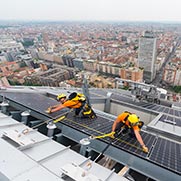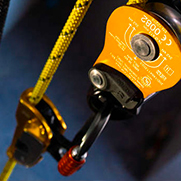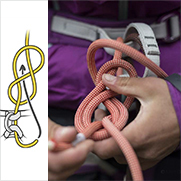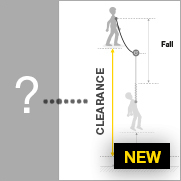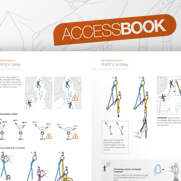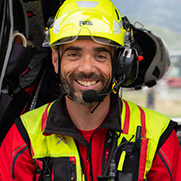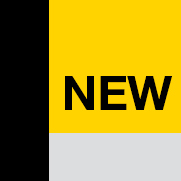Full program: International rope access symposium
The symposium will serve to bring together both rope access workers and managers or entrepreneurs who work with the profession. It will include presentations, practical workshops, and a trade show dedicated to rope access. Discover the full program…
7 Janvier 2016
Accès sur corde et espaces confinés
THE OPPORTUNITY TO INFLUENCE INDUSTRY AND CULTURE
Date: April 3 1:15 pm to 2:00 pm
Presenter name: Chad Shearer
Presenter's professional background
My rope access career began with Ropeworks Industrial Group, Inc. in 2003. I served as a field technician, rope access instructor, Level 3 Team Leader, Equipment Manager, Training Manager, and currently I'm acting as the General Manager for the Ropeworks Team of Mistras Group, Inc. I've been an active member within SPRAT since 2005. I'm the current Chair of the SPRAT Certification Requirements Subcommittee. I'm certified as a SPRAT Level 3, SPRAT Evaluator, IRATA Level 3, IRATA Instructor and IRATA Assessor.
Presentation description
We will look at how the safety, integrity, culture and best practices of the rope access industry can influence other industries and provide a strong background for managers to run a business of integrity.
ACCESSING AN INACCESSIBLE HISTORY:
COLLABORATION BETWEEN VERTICAL PROGRESSION SPECIALISTS AND ARCHAEOLOGISTS IN PERU
Date: April 3 2:15 pm to 3:00 pm
Presenter name: Dr. J. Marla Toyne and Salvador Guinot Castello
Presenter's professional background
Dr. J. Marla Toyne: Assistant Professor of Anthropology at the University of Central Florida, with a Ph.D. in Anthropology (from Tulane University) and 14 years of working as an archaeologist in Peru, South America. I have collaborated with the Ukhupacha Association since 2008 in the mountainous region of Chachapoyas using rappelling vertical progression techniques to lead archaeological investigations into the construction and distribution of ancient tombs.
Salvador Guinot Castello: Technical Professional in Spelunking and Canyoning from Castellon, Spain, and President of the Ukhupacha Association, Spain (founded in 1998) whose membership includes volunteer spelunkers. Our goal is to help scientists reach inaccessible locations for research by providing technical assistance with rope systems. We have experience in projects in Peru at locations such as Machu Picchu, Kuelap, and the Canon de Colca.
Presentation description
Archaeological investigations "normally" take place as a process of horizontal exploration, documentation, and excavation. In the Andean region of South America, many ancient cultures transformed the natural landscape around them by placing their ancestors in elaborate tombs high on cliff faces and in deep caverns. This creates significant challenges for scientific exploration using traditional archaeological methods to reach and try to reconstruct burial practices and understand ancient cultural belief systems. This presentation describes our exploration of the monumental vertical cemetery of La Petaca in the Chachapoyas region on the eastern Amazonian slopes. There, our ongoing work necessitates the technical support of vertical progression techniques in order to access safely the tombs and record the details of the over 125 archaeological mortuary structures. Our collaboration with the Ukhupacha Association (Spain) provides logistical support through technical training, equipment, and specialized techniques for performing archaeological tasks while suspended and on stationary levels at precarious elevations. These innovations transform our abilities as scientists to reach these incredible places, but also enable our experience of how these ancient peoples may have perceived these places and how this may have shaped their existence. The Petzl Foundation funded previous research at La Petaca (2013).
HIGH DIRECTIONAL ANCHORING AND MECHANICAL TESTING OF ROPE ACCESS EQUIPMENT
Date: April 4 9:00 am to 10:45 am
FIRST PART: HIGH DIRECTIONAL ANCHORING
Presenter name: Rob Stringer
Presenter's professional background
Live in Australia, Level 3 Australian Rope Access Association (ARAA) Rope Access Technician, ARAA Assessor, ARAA Board Member and Technical Director, Owner of Highpoint Access & Rescue, Rope access experience in industrial plants such as power generation, chemical process plants, refineries, etc.
Develop and present training in rope access and rope rigging. Been personally researching rope rigging related issues using our purpose built testing facility in Rockhampton Queensland Australia. Invested in a slow pull test machine, drop test tower, rigging demonstration frame and quite a collection of load test instruments over the years in order to develop knowledge and understanding of all things rope.
Presentation description
Demonstrate the key principles and show their importance for the safe use of some typical high directional and anchor frames. Briefly explore the limitations of these frames and discuss some of the issues relating to introducing powered equipment to the frame.
The presentation normally runs for an hour total. It is broken up into two 30 minute sections with a break between to let people recover and have a bit of an up close look at the frame systems.
By the first break we have 3 frames set up and operational for the participants to examine:
- Standard tripod directly supporting a suspending a load.
- Easel A frame as an anchor directly supporting a suspended load.
- Easel A frame as a high directional.
This gives participants time to assimilate the first session.
By the end of the second session we have up to 3 frames (depending on available space and resources) set up and operational:
- Monopole as a high directional
- Sideways A frame as a high directional
- Classic A frame as a high directional
SECOND PART: MECHANICAL TESTING OF ROPE ACCESS EQUIPMENT
Presenter name: Rick Vance
Presenter's professional background
Rick Vance, Technical Director for Petzl America, is a mechanical engineer with a background in mechanical testing and certification of work at height PPE. He has more than 20 years of recreational climbing experience and is trained as a climbing guide, rope access technician, high angle and confined space technician.
Presentation description
This workshop will focus on destructive testing of common pieces of rope access equipment. Discussion topics will include: comparison of static and dynamic test methods, the limitations of certification testing, the effects of compatibility on system strength, and an open Q and A.
INTERNATIONAL ROPE ACCESS ORGANISATION PANEL DISCUSSION
Date: April 4 9:00 am to 10:45 am
Panel moderators: Chris Blakeley and Michel Goulet
Panelist names and association represented:
- SPRAT: Matt Hudson
- IRATA: Graham Burnett
- FISAT: Sven Drangeid
- SOFT: Tore Rønstad
- ARAA: Richard Sheppard
- SRAA: Jonathan How
- ANETVA: Inigo Villaseca
- SFETH: Michel Richard
Presentation description
This panel discussion will focus on Rope Access association histories, goals, strategies, safe practices, certification models, challenges and future developments. Panelist are well versed in all aspects of their association's operations and able to address many questions from the audience. We will have delegates on the panel representing at least the 8 following organizations: IRATA, SPRAT, SOFT, FISAT, SFETH, ARAA, ANETVA and SRAA. We expect over 150 rope access technicians, managers and administrators to be in attendance at this lively and educational panel discussion.
PRODUCT CERTIFICATION
Date: April 4 11:00 Am to 11:45 Am
Presenter name: Adrien Dumas
Presenter's professional background
Petzl Professional Division - International Product Manager. My goal is to listen to the needs of Professional workers (rope access technicians, arborists, tactical units, technical rescue specialists, etc.) and provide them with the best possible products for safe & efficient work-at-height solutions.
Presentation description
All Personal Protective Equipment (PPE) used around the world needs to be in compliance with legislation that defines safety perimeters, minimum performance requirements and testing protocols. This presentation will outline how Petzl deals with the certification of PPE, with examples of equipment used in the rope access industry.
DEVELOPMENT OF MANAGEMENT & SUPERVISION IN ROPE ACCESS
RAMRASS Rope Access Manager, Rope Access Safety Supervisor
Date: April 4 11:00 am to 11:45 am
Presenter name: Graham Burnett
Total Access (UK) Ltd (ARCO)
IRATA Chair 2015-17
IRATA Auditor
Involved with IRATA since its inception
Presenter's professional background
- Co-founder Total Access (UK) Ltd, IRATA Training & Operator Member of IRATA since 1992.
- Rope Access services & installation of permanent Rope Access systems, independent Rope
- Access equipment supplier, UK's first Rope Access dedicated training centre.
- Previously L3 and Assessor 1989. Managed Rope Access operations & training for 25 + years.
- 25 +years IRATA Chairman, Vice Chairman, IP Chairman, Chair Health & Safety Committee, Training Committee, Training Review Panel, Chairman Equipment & Standards 2013-15,
- Disciplinary Panel. Original Assessor & selection panel, International Liaison. Director IRATA International.
- Co-compilation of the original IRATA Guidelines & every revision since. IRATA International Code Of
- Practice (ICOP), General Requirements, Training & Certification Scheme (TACS), Audit
- Procedures, Medical & Fitness requirements, Disciplinary Procedure and most recently RAMRASS.
- Represented IRATA at BSi & AIF. Developed Rope Access Wind Energy Guidance & Instigated
- Lead Audit Training program along with Association Disciplinary Guidance.
Presentation description
The presentation will set out the history and development of Supervision within the IRATA certification
scheme and the main drivers for the development of a brand new and industry specific scheme aimed at
continuous improvement in this field.
It will draw on the comparisons made with other schemes and the requirements set out in other Rope Access
standards such as:
ISO 22846-2: Personal equipment for protection against falls – Rope access systems – Part 1: Fundamental principles for a system of work; Part 2: Code of practice.
Norwegian SOFT NS 9600 - Rope access techniques is national certification standard for Rope access techniques.
The main principals being that when work is to be carried out at height, good management and supervision are essential to ensure a safe system of work. Rope access worksites, therefore, should be properly managed and supervised to ensure the safety and health of those involved in the rope access project.
A way of ensuring competence of rope access managers and rope access safety supervisors is by assessment and periodic refreshment of their managerial or supervisory skills and health and safety knowledge, together with training, where appropriate. The scheme, sometimes referred to as the RAMRASS scheme, will provide minimum competence requirements and ways to achieve and maintain these.
It also aims to provide the opportunity for rope access managers and rope access safety supervisors to become IRATA qualified and those aspiring to be such.
The scheme will require suitably qualified trainers, who are competent to train candidates in knowledge of the IRATA International code of practice for industrial rope access (ICOP), their managerial or supervisory skills, health and safety knowledge. The assessment process to qualify such trainers, who are known as IRATA-qualified RAMRASS trainers, is to be covered in the scheme.
GLEN CANYON DAM 2015 – LEFT WALL – SEMI DETACHED ROCK SLAB STABILIZATION
Date: April 4 1:15 pm to 2:00 pm
Presenter name: Mark Neeley
Presenter's professional background
I am a Registered Professional Geologist; with 40+ years' experience; primarily with the United States Bureau of Reclamation. I was hired by Reclamation in 1981 to assist with monitoring of Rainbow Bridge. I learned to descend using 7/8-inch diameter wire core manila rope as the mainline with two 5/8-inch diameter manila ropes as pigtails each attached to the mainline with a “scalers-hitch” and to the harness with a girth-hitch through a spreader bar attached to a canvas/leather belt with a homemade seat. I was dragged kicking and screaming into the modern rope access world when SPRAT was organized. I used my spreader bar canvass and leather belt and homemade seat with a rappel rack to pass my first SPRAT certification. I am still a dinosaur; I prefer using a rappel rack and 12 mm rope. All of my rope access experience is work related. I have never done any recreational rock climbing.
Presentation description
On August 28, 2015 around 5:00 pm, a rock fall was reported by Bureau of Reclamation (BOR) personnel on duty at Glen Canyon Dam. The source area of the August 28, 2015 rock fall is about 100 to 150 feet downstream (south) of the left (east) abutment of the dam at about elevation 3480 feet. In addition to the 2 to 3 yds³ rock fall, a rock slab, visually estimated to be 50 feet high and 30 feet wide, developed immediately above the source of the August 28, 2015 disturbance. The slab of rock was estimated to have an average thickness of 2.5 feet and a volume of about 3750 ft³ or about 500,000 lbs. This presentation presents historical site conditions which may have contributed to the August 28, 2015 rock fall and rock slab development and actions taken by the BOR mitigate the rock fall.
ASK US ANYTHING (well, almost anything..)
Date: April 4 1:15 pm to 2:00 pm
Presenters: Chris Blakeley (Petzl Solutions Network manager), Olivier Galai (Petzl Solutions manager), Rick Vance (Petzl America Technical director), Nazz Kurth (Petzl America President), Adrien Dumas (Petzl Product manager), Alain Maurice (Petzl R&D metallic manager)...
Presentation description
An opportunity for delegates of the 2016 Petzl RopeTrip Symposium to put your own questions directly to Petzl. Whether it concerns the fine detail of a specific product, a technique, or a general rope access question, we'll do our best to answer live. With this small panel of Petzl experts (and maybe some others who'll join us on the day) we hope to be well placed to answer your technical questions which will surely come from all angles.
EFFECTS OF LINE AND CONNECTION FAILURES DURING PICK-OFF RESCUES
Date: April 4 2:15 pm to 3:00 pm
Presenter name: Charley Rankin
Presenter's professional background
I have been the designer and conductor of many drop tests with different groups over the past five years. We often conduct tests in training or prior to issuing new equipment to technicians. I have been the live test of a few back-up drop tests that I designed. I have a background in the scientific field, with a B.S. in Chemistry and a Master's Degree in Environmental Toxicology. While these subjects aren't directly related to the field of rope access, they do provide me with a background in designing appropriate experiments. I have had my work published in the National Institute of Environmental Health Science's premiere scientific journal; Environmental Health Perspectives.
Presentation description
Quantitatively and qualitatively analyse the effects of the following during a pick-off rescue:
- Line failures (main and back-up line of rescuer)
- Location (and choice) of backup device during pickoff from ascent
- Secondary connection length (in relation to primary connection) of victim to rescuer
- Effect of rescuer being in ascent mode during backup line failure
- Explore the relevance of the "loaded line test"
During SPRAT evaluation sessions and in the rope access community, there are currently a number of disputed techniques and "best practices." The results of these tests could help provide guidance to rope access companies, trainers, and technicians when training for rescue and when implementing rescue procedures.
CORROSION INVESTIGATION OF THE GATEWAY ARCH
Date: April 4 2:15 pm to 3:00 pm
Presenter name: Dave Megerle
Presenter's professional background
Thirty plus years working in the rope access industry. Currently Rope Access Program Manager and Senior Associate with Wiss, Janney, Elstner and Associates. Prior to joining WJE owned and operated Vertical Technology, providing rope access, suspended scaffolding, and rigging services based in Boulder, Colorado. Founding member of WJE's Difficult. Access Team as an independent contractor from 1990 till 2006. Much of my rope access experience has been influenced by 35 years of rock and ice climbing.
Presentation description
October 2014, WJE's Difficult Access Team completed the rope access portion of an ongoing corrosion investigation to access staining, take samples and document current conditions on the North leg of the Gate Way Arch in St. Louis, MO. Through first-hand account, video and photographs this presentation will describe the process from original concept, to installation and removal of this unique access system developed specifically for this iconic structure.
EXPERIMENTATION - TESTS AND REALITY
Different hats - different folks?
Date: April 4 3:15 pm to 4:00 pm
Presenter name: Dr Mark Taylor
Presenter's professional background
Research Fellow; MA Textile Innovation and Branding Programme Leader. BSc (Hons) PhD (Leeds)
Mark is a Research Fellow in the Performance Clothing Research Group. Before starting a late career in academia Mark worked in the field of IT. In 1996 Mark started a new career path when he came to Leeds to read Sports Science (Outdoor Activities). After graduating with honours in 1999 he continued in this vein with a PhD which focused on the impact absorbing mechanisms of climbing helmets.
Upon completion of his PhD Mark was employed as a Research Fellow on an EPSRC funded project to investigate, among other things, novel ways to improve the measurement of air permeability and moisture vapour transmission.
Since the end of this project Mark has worked in many areas related to comfort in extreme environments and protection from falls from a height, whilst becoming more involved in teaching, principally in the Faculty of Engineering.
Mark is also involved in consultancy and his services have been required as an expert witness. He has advised several manufacturers during the development of new climbing helmet models, leading to some innovative design ideas.
Presentation description
Z89.1 – EN 397 – EN12492 – Z94.1. What does this code speak all mean? Are these certification tests really relevant for the modern rope access environment?
How can we be comfortable in the knowledge that we're wearing equipment that is designed and tested for the job we're doing?
We'll be using the important example of helmet choice to highlight how certification test criteria can be difficult to navigate, and how manufacturers deal with the options. Mark will take us through the process, looking at the manufacturer's obligations, those of the certifying bodies and, most importantly, our choices as a rope access technician.
STRUCTURAL ANCHOR SYSTEMS IN THE ROPE ACCESS ENVIRONMENT - BS 8610
Date: April 4 3:15 pm to 4:00 pm
Presenter name: Scott Shaw
Presenter's professional background
Lyon Work & Rescue sales rep 2008 - 2012,
Lyon Equipment, Petzl Professional Brand Manager, September 2012 – present
Dealing with all industry sectors and communities for the UK including Work at Height, Technical Rescue, Arborist and Rope Access. Specializing in working with the Offshore Oil and Gas Rope Access market for the last 6 years.
Previous experience working in the outdoor retail sector outfitting Rescue teams and international expeditions, also working as an outdoor educator for climbing, canoeing and mountain biking.
Lyon Equipment has over 40 years experience working with both industry and the outdoor sector. As a founding member of the International Rope Access Trade Association (IRATA) we have been involved in the testing and development of safe working principals, training, product development and testing. This key industry link has allowed us to become involved with standards at British, European and ISO levels.
Presentation description
Following recent changes regarding the application of CE marking on anchors for working at height, confusion has reigned between users, installers, manufacturers and resellers.
EN795 is a European Standard which includes various classes of anchor devices – including those regularly used in rope access. A recent ruling from The European Commission has made significant changes and some of the classes of anchors in EN795 are no longer classified as Personal Protective Equipment (PPE) and therefore there is now no standard in Europe for many of the anchors commonly used in rope access.
Subsequently the International Industrial Rope Access Trade Association (IRATA) lobbied British Standards Institute (BSI) to propose that a British Standard should be written to cover the performance requirements of the rope access anchors which are no longer covered by EN795.
Drafting work started in 2014 and it is likely that the new standard will be published in the third quarter of 2016. The drafting group took the opportunity in this new standard to include performance requirements and testing of anchor devices in the base material into which they are installed. Additionally practical tests were carried out to verify the theoretical loads that may be imposed on an anchor during work restraint, fall arrest, work positioning, rope access and rescue.
Lyon Equipment recently commissioned a study to help clarify two subjects and bridge the gap between performance requirements and the workplace:
What exactly are the loads which may be experienced by anchor devices during use, and how could a suitable anchor be determined?
In the absence of a relevant European Standard for rope access anchors, what are the performance requirements and test methods for anchors when installed in a base material?
This presentation, although based around a UK and European legislative framework, will be of interest to anyone who installs, selects, inspects or uses anchors for rope access and rescue loads. We will also see how creating guidance based on real testing and industry best practice can lead to national standardization and potentially – in this case – a European document.
Petzl RopeTrip Symposium registration form
| Registration |
Accès direct…
News associées


